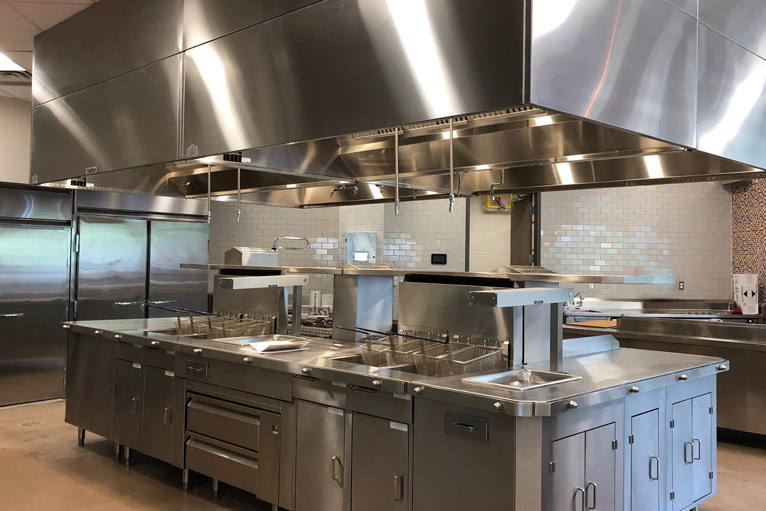We often hear of the necessity of sustainability. When it comes to commercial kitchens, what does that look like in practice? In particular, commercial kitchens and ventilation are essential in maintaining a safe and healthy environment. Inherently, the kitchen ventilation system uses energy; how does one reduce that impact and move toward sustainability?
Considering that the ventilation system is only one aspect of the total kitchen design that impacts sustainability is important. Everything from sourcing foodstuffs and how they are processed and distributed to water usage, construction methods, and a host of other elements all impact sustainability. For this piece, we’ll focus on ventilation.
Here are some steps that can be taken to move toward sustainable commercial kitchen ventilation:
- It may seem obvious to properly design the kitchen ventilation system, but choosing the type and style of hood directly impacts performance. All exhaust hoods over the same cookline extract the same convective load and effluent but do them at different exhaust rates. Like miles per gallon ratings, exhaust hoods by type (backshelf, hybrid, canopy) exhaust to varying rates for the duty load. Choose one that is highly efficient, and exhausts at the lowest possible exhaust rate for the given cooking load while providing full capture and containment.
- Use energy-efficient appliances. Most appliances have an Energy Star rating, which is an excellent starting point. For a given energy input, an appliance type can utilize that energy more efficiently, and cook more or longer than another appliance that is not energy star rated. Seek out your appliance expert for guidance on the proper selection.
- Utilize demand control ventilation (DCV). These systems vary the volume of the exhaust based on the cooking duty, off, idling, and cooking to minimize the exhaust and match it to what is needed for the generated load. The types of DCV systems vary and are addressed in a previous KV.com article (see article). The return on investment for these systems is generally pretty short (2-3 years), and ASHRAE 90.1 identifies it as one of three prescribed energy reduction methods for kitchen exhaust.
- Maintenance is an often overlooked facet of sustainability. Improperly maintained exhaust and associated components increase energy use, and filters can become clogged, increasing resistance to airflow, for example.
- Use of transfer air or recirculating air should be evaluated. Already conditioned air is effectively used twice when transferred to an adjoining space. Your mechanical engineer can guide you in this approach. It is also another element of ASHRAE 90.1 for meeting energy reduction method for commercial kitchen exhaust.
- The use of natural ventilation should also be considered. In a controlled way, especially during “bridge seasons”, spring and fall are ideal times, depending on your local climate, to take advantage of nature’s free cooling.
These are a few steps that can be taken to improve the sustainability of your commercial kitchen ventilation system, reduce energy usage and create a safer and healthier environment for your staff and customers.
Should you require help selecting the right sustainable solutions for your commercial kitchen, the experts that manufacture these systems can guide you on the proper selection needed to meet your requirements.
Read another recommended article.

Demand Controlled Kitchen Ventilation Systems Sensors, how do they differ, and how are they the same?
Subscribe to kitchenventilation.com
Stay up to date by subscribing to Halton’s Commercial Kitchen Ventilation Blogs by entering your email address to subscribe and Halton will provide you with the latest information on commercial kitchen exhaust hoods, pollution control units, air handling, and safety systems. You will receive notifications of new posts by email.

